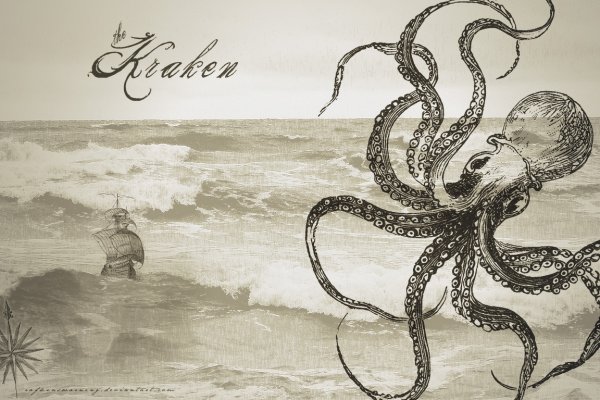Kra17.at

Kra17.at - Кракен ссылка на сайт com
Ику-Турсо финский кошмар Видовая принадлежность финского морского чудовища Ику-Турсо (Турсас, Меритурсас) неясна. Кадр "Акулосьминог". Оно выпускало в воду тёмную жидкость с очень сильным и неприятным запахом. Видимо, способность головоногих моллюсков восстанавливать утраченные щупальца сделала Аккорокамуя ответственным и за излечение болезней рук и ног, включая переломы. В 1802 году французский натуралист Пьер-Дени де Монфор ( рус., один из основоположников малакологии, опубликовал исследование моллюсков, в котором предложил различать два вога. Цвет тела "архикальмаров" красный. К этому слову восходят болгарское "крак" нога македонское "крак" ответвление "отросток "ветка" и "нога словенское krak длинная нога kraka нога свиньи "окорок сербское "крак" продолговатая часть предмета "ответвление "нога (длинная польское krok шаг русское диалектное "корок" бедро. Кракен ( англ. В теле его не было ни костей, ни хрящей". Но, под давлением научных кругов своего времени был вынужден исключить его уже из второго издания книги. В 1861 году капитан парового корвета «Алектон» Буге доставил во Французскую академию наук 20-килограммовый кусок мяса и подробный доклад о том, как его корабль встретил кракена вблизи острова Тенерифе. На его выделения сплывается много рыбы, которую и ловят рыбаки. М.: ИД «Прибой 1997. . Пожирая их, чудовище вырабатывает эту жидкость снова Иногда два-три десятка рыбачьих лодок вьются над кракеном. На кракена очень похож монстр риггер из игры Ведьмак. Римский сочинитель Плинний Старший упоминал о кракене, которого видели у Геркулесовых столбов: тот нежился в тёплой воде, а люди по ошибке приняли наполовину скрытое тело животного за гряду островов. Чудовища морских глубин / Пер. Выглядит он как гигантский осьминог или кальмар. Большинство очевидцев явления кракена упоминают длинные щупальца рога животного, которыми чудовище якобы может утащить на дно корабль. Некоторые исследователи предполагают связь Ику-Турсо с турсами великанами из скандинавской мифологии. При этом осьминог приобрёл человеческий облик. В 2004 году исследователи из Национального музея науки Японии и Ассоциации по наблюдению за китами получили первые снимки живых гигантских кальмаров в их естественной среде, а в 2006-м им удалось снять гиганта на видео. Тем не менее, крупные кальмары кракены могут оказать серьёзное сопротивление кашалоту и даже отвоевать свою жизнь. Встречи моряков с гигантским кальмаром продолжились, а в 1870-х годах стали даже частыми. Игры В игре Kings Bounty. Не следует путать с гигантским спрутом. Однажды он вступил в схватку с китом и был им убит. Напуганные мифами о кракене, моряки обстреляли животное из пушек, а потом попытались поднять его тело на борт. Тогда тела мёртвых кальмаров обнаруживали больше ста раз (существуют гипотезы, что в эти годы среди них была эпидемия какой-то неизвестной болезни). Согласно преданиям некоторых маорийских племён, чудовищный кальмар воровал у рыбака по имени Купе приманку для рыбы. Несмотря на латинское название, встретить его можно не только в Атлантическом, но и в Тихом океане. Кракен ( Архивная копия от 22 сентября 2013 на Wayback Machine ) / Санкт-Петербургский вестник. . Сведения о гигантских головоногих зоолог добывал, опрашивая китобоев в Дюнкерке. У них родилось два маленьких осьминога. Isbn Эйвельманс. Это показание было дано в суде под присягой. в английском издании «St. Сонет Теннисона Под громоподобными волнами Бездонного моря, на дне морском Спит Кракен, не потревоженный снами, Древним, как море, сном.

Managing and Monitoring Landscapes Protecting and improving land health requires comprehensive landscape management strategies. Land managers have embraced a landscape-scale philosophy and have developed new methods to inform decision making such as satellite imagery to assess current conditions and detect changes, and predictive models to forecast change. The Landscape Toolbox is a coordinated system of tools and methods for implementing land health monitoring and integrating monitoring data into management decision-making.The goal of the Landscape Toolbox is to provide the tools, resources, and training to land health monitoring methods and technologies for answering land management questions at different scales.Nelson Stauffer Uncategorized 0The core methods described in the Monitoring Manual for Grassland, Shrubland, and Savanna Ecosystems are intended for multiple use. Each method collects data that can be used to calculate multiple indicators and those indicators have broad applicability. Two of the vegetative methods, canopy gap and vegetation height, have direct application…Continue readingNelson Stauffer Uncategorized 0Quality Assurance (QA) and Quality Control (QC) are both critical to data quality in ecological research and both are often misunderstood or underutilized. QA is a set of proactive processes and procedures which prevent errors from entering a data set, e.g., training, written data collection protocols, standardized data entry formats,…Continue readingNelson Stauffer Uncategorized 0In order to meet its monitoring and information needs, the Bureau of Land Management is making use of its Assessment, Inventory, and Monitoring strategy (AIM). While taking advantage of the tools and approaches available on the Landscape Toolbox, there are additional implementation requirements concerning the particulars of sample design, data…Continue readingNelson Stauffer Methods Guide, Monitoring Manual, Training 0We’ve added two new videos demonstrating and explaining the Core Methods of Plant species inventory and Vegetation height to our collection. These are two methods that previously didn’t have reference videos, although the rules and procedures for both can be found in volume I of the Monitoring Manual for Grassland, Shrubland,…Continue readingSarah McCord Methods Guide, Monitoring Manual, Training 0Question: Are succulents counted as a woody species when measuring vegetation heights? Answer: Yes. Succulent plant species are considered to be woody in contrast to herbaceous because their function is more similar to woody vegetation than herbaceous vegetation in many applications of these data. From a wildlife viewpoint: Some succulents are…Continue readingNelson Stauffer Blog, News, Presentations 0The 68th annual Society for Range Management meeting held in the first week of February 2015 in Sacramento, California was a success for the Bureau of Land Management’s Assessment, Inventory, and Monitoring (AIM) strategy. Staff from the BLM’s National Operations Center and the USDA-ARS Jornada hosted a day-long symposium to…Continue readingJason Karl Blog, Sample Design sample design, sampling 0What is an Inference Space? Inference space can be defined in many ways, but can be generally described as the limits to how broadly a particular results applies (Lorenzen and Anderson 1993, Wills et al. in prep.). Inference space is analogous to the sampling universe or the population. All these…Continue readingNelson Stauffer Blog, Monitoring Tools & Databases, News 0A new version of the Database for Inventory, Monitoring, and Assessment has just been released! This latest iteration—as always—aims to improve stability and reliability for field data collection on a tablet and data report generation in the office. For more information about DIMA and how it fits into project designs,…Continue readingJason Karl Blog, News 0In compiling information for the redesign of the Landscape Toolbox website and the second edition of the Monitoring Manual, I kept referring back to a small set of seminal references. These are my “Go-To” books and papers for designing and implementing assessment, inventory, and monitoring programs and for measuring vegetation…Continue readingJason Karl Blog, News 0We’re excited to show off the new redesign of the Landscape Toolbox. We’re in the middle of not only refreshing the website, but also completely overhauling the content and how it’s organized in the Toolbox. This version of the Toolbox is draft at this point and is evolving rapidly. Take…Continue reading